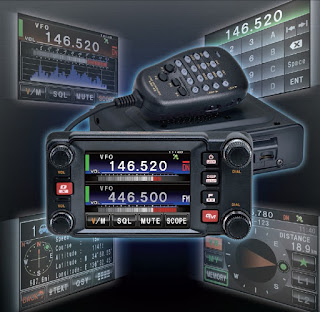pinout schematics for the remote speaker connection
If you use a single speaker then you want to wire to the tip and ring. If you use two speakers, then the - side of each speaker goes to sleeve. Then the + side of speaker A goes to tip and the + side of B goes to ring.
If you will use both speakers (one for each band) then use the explanation below. For a single speaker use the Yaesu adapter only, or replace the mono end connector on speaker with a stereo end. Connect the speaker wires to the tip and center band only. Aftermarket stereo to mono adapters short the tip and center bands together and will cause poor or low level audio on one or both bands.
Shell is common, tip is Band A, ring is Band B, if you want to use separate speakers for each band. Use a stereo-to-mono adapter (included with the FTM-400, anyway) to have both bands on one speaker.
Tip, ring, sleeve. Band A, Band B, ground.
If you use ONE speaker then use the tip and the ring.



